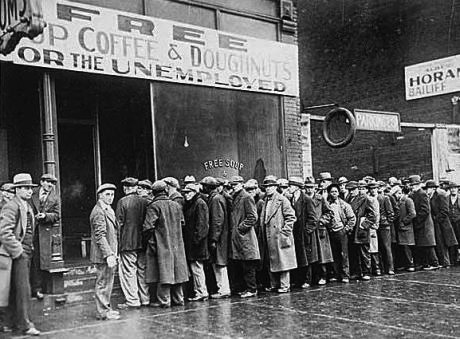
The Wall Street Crash of 1929 was the most devastating stock market crash in the history of the United States, and it signaled the beginning of the 10-year Great Depression that affected all Western industrialized countries.
On October 24, the market lost 11percent of its value at the opening bell on very heavy trading. Several leading Wall Street bankers met to find a solution to the panic and chaos on the trading floor. The bankers who met on Oct. 24 included Thomas W. Lamont, acting head of Morgan Bank; Albert Wiggin, head of the Chase National Bank; and Charles E. Mitchell, president of the National City Bank of New York. They chose Richard Whitney, vice president of the Exchange, to act on their behalf.
With the bankers’ financial resources behind him, Whitney placed a bid to purchase a large block of shares in U.S. Steel at a price well above the current market. As traders watched, Whitney then placed similar bids on other “blue chip” stocks. This tactic was similar to one that ended “the Panic of 1907.” The Dow Jones Industrial Average recovered, closing with it down only 6.38 points for the day; but unlike 1907, the respite was only temporary.
Over that weekend, the events were covered by the newspapers across the United States. On October 28, more investors decided to get out of the market, and the slide continued with a record loss in the Dow for the day of 13percent.
The next day, “Black Tuesday”, October 29, 1929, about sixteen million shares were traded, and the Dow lost an additional 12 percent. William C. Durant joined with members of the Rockefeller family and other financial giants to buy large quantities of stocks in order to demonstrate to the public their confidence in the market, but their efforts failed to stop the large decline in prices. Due to the massive volume of stocks traded that day, the ticker did not stop running until about 7:45 p.m. that evening. The market had lost over $30 billion in the space of two days, which included $14 billion on October 29 alone.
The volume of stocks traded that day was a record that was not broken for nearly 40 years.
Some people believed that abuses by utility holding companies contributed to the Wall Street Crash of 1929 and the Depression that followed. Many people blamed the crash on commercial banks that were too eager to put deposits at risk on the stock market.
The stock market crash and ensuing Great Depression, along with the environmental and agricultural disaster of the 1930s “Dust Bowl,” formed the longest, most widespread and deepest depression of the 20th century.
About 25 percent of U.S. workers were unemployed and a militant movement of unemployed workers arose.










